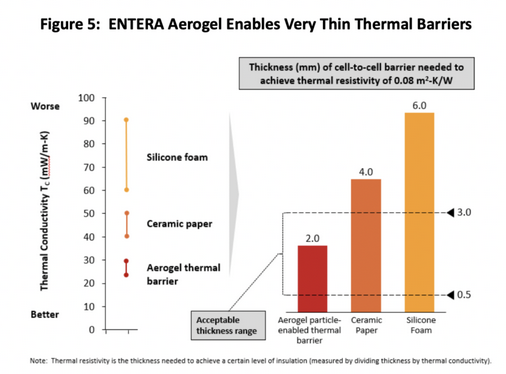Article on aerogel heat shields for EV batteries to prevent thermal runaway
Did you know that aerogels are a powerful solution to ensure the safety of electrical batteries e.g. in electrical vehicles?
As core component of thermal barriers, they contain the heat flow of battery cells that suffer from thermal runaway. In this way, they protect adjacent battery cells, thus preventing dangerous chain reactions across the entire battery.
Compared to other materials such as ceramic papers or silicone foams, aerogels bring several key advantages to the table:
1️⃣ They are thermal superinsulators which means that thermal barriers based on aerogel can be very thin. This frees up valuable space for more battery cells (more power) or more room in the vehicle.
2️⃣ Due to their nanoporous structure, they retain their insulation performance even when being compressed. And this is necessary since the battery cells expand over the lifetime of the battery, which reduces the space for the thermal barriers. In many cases, the compression can even improve the insulation performance of aerogels.
3️⃣ Due to their low density, aerogels are also very lightweight.
For more details on aerogels in EV batteries, check out a great article our aerogel colleagues from Cabot Corporation published on Battery-News. Along with Aspen Aerogels, BASF and others, Cabot were true pioneers in the aerogel field when the first aerogel wave started in the 1990s.
Thin thermal barriers become possible with aerogels. Source: batterynews.com / Cabot Corporation.
As aerogel-it, we want to support the transformation towards electrical vehicles with our aerogel know-how and products. We offer an aerogel-based heat shield with excellent performance and are also working on further improved solutions based on our innovative aerogel formulation platform and particle technology.
EV heat shield available from aerogel-it. Source: aerogel-it GmbH.







